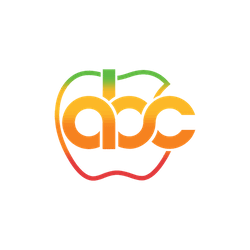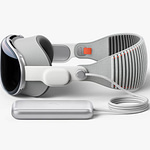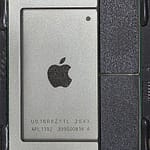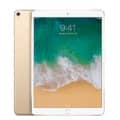- All Apple Devices
- MacBook
- Apple MacBook Pro (15-inch, 2016, Core i7 6820HQ)
Apple MacBook Pro (15-inch, 2016, Core i7 6820HQ)
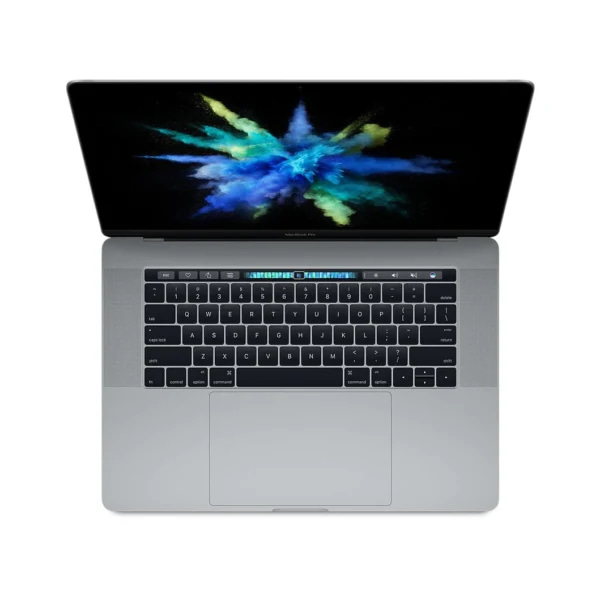
Apple MacBook Pro (15-inch, 2016, Core i7 6820HQ)
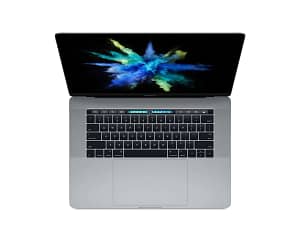
Product Brand: Apple
Editor's Rating:
9
9
Pros
- Large, high-quality display with good color accuracy
- Fast performance with quad-core i7 processor and dedicated graphics card
- Sleek and durable design with good build quality
- Multiple Thunderbolt 3 ports for connectivity and charging
- Good battery life for a high-performance laptop
- Comfortable and responsive keyboard and trackpad
Cons
- Expensive compared to some other laptops in its class
- Lack of traditional USB-A ports may require dongles for some peripherals
- Non-upgradable RAM and storage
- No water resistance or dust protection
Apple MacBook Pro (15-inch, 2016) laptop Specs and Features
The 2016 MacBook Pro is a top-of-the-line laptop with a 15-inch screen. It has a sleek design and powerful features.
The touchpad is large and responsive, and the keyboard is backlit and easy to use. The screen is bright and clear, and the audio is loud and clear.
The battery life is excellent, and the overall performance is outstanding. The only downside is the price, but for the features and performance, it is worth it.
What are the specifications of the MacBook Pro (15-inch, 2016) laptop?
Here’s a summary of the technical specifications for the MacBook Pro (15-inch, 2016) laptop:
- Processor: 2.7GHz quad-core Intel Core i7, Turbo Boost up to 3.6GHz
- Memory: 16GB of 2133MHz LPDDR3 onboard memory
- Storage: 256GB 512GB 1TB or 2TB SSD
- Display: 15.4-inch (diagonal) LED-backlit display with IPS technology; 2880-by-1800 native resolution at 220 pixels per inch
- Graphics: AMD Radeon Pro
- Connectivity: Wi-Fi, Bluetooth 4.2
- Camera: 720p FaceTime HD camera
- I/O: Two USB 3 ports, MagSafe 2 power port, SDXC card slot, Thunderbolt 2 port, 3.5mm headphone jack
- Colours: Silver, Space Gray
Full Technical Specifications
General
| Device Type | Laptop |
| Released | 15 November, 2016 |
| Status | Available |
| External Buttons and Connectors |
Four Thunderbolt 3 (USB-C) ports with support for: Charging DisplayPort Thunderbolt (up to 40 Gbps) USB 3.1 Gen 2 (up to 10 Gbps) |
Processor (CPU)
| Processor Type | Intel Core i7 (6820HQ) |
| Processor Speed | 2.7 GHz |
| Processor Cores | Quad Core |
| Processor Cache |
Level 1 Cache 256 KB Level 2 Cache 1 MB Level 3 Cache 6 MB |
| Base frequency | 2.7 GHz |
| Turbo frequency | 3.6 GHz |
| Threads | 8 |
| Fabrication process | 14 nm |
| 64-bit Computing |
Memory (RAM)
| RAM | 16GB |
| RAM Type | LPDDR3 SDRAM |
| RAM Speed | 2133MHz |
| RAM Max | upto 16 GB |
| User Upgradable | No |
Storage
| Storage Type | Solid State Drive (SSD) |
| Storage Capacity |
256GB 512GB 1TB 2TB |
| Technology | PCIe |
| User Upgradable | No |
Display Info
| Display Type Display Technology => A number of display technologies and types used in mobile phones => TFT (Thin Film Transistor), IPS (In-Place Switching), OLED (Organic Light Emitting Diode), AMOLED (Active-Matrix Organic Light-Emitting Diode), Super AMOLED (an even advanced version of AMOLED), Resistive Touchscreen (Resistive touchscreens contain two layer of conductive material with a very small gap between them which acts as a resistance), Capacitive Touchsceen (Capacitive touchscreen technology consists of a layer of glass coated with a transparent conductor) | Retina display LED-backlit display with IPS technology |
| Size | 15.4-inch (diagonal) |
| Resolution | 2880-by-1800 |
| Pixel Density Pixel Density (PPI) is refers to the concentration of pixels on a particular display, measured in pixels per inch (ppi). Pixel density is calculated by dividing the diagonal pixel resolution of a display by its diagonal size, higher pixel density better display quality. | 220 pixels per inch |
| Refresh rate | 60Hz |
| Aspect Ratio | 16:10 |
| Max. brightness | 500 nits brightness |
| Extras |
Supported scaled resolutions: 1920 by 1200 1680 by 1050 1280 by 800 1024 by 640 500 nits brightness Wide color gamut (P3) |
Case
| Height | 0.61 inch (1.55 cm) |
| Width | 13.75 inch (34.93 cm) |
| Depth | 9.48 inch (24.07 cm) |
| Weight | 4.02 pounds (1.83 kg) |
| Colors |
Silver Space Gray |
Graphics Card
| GPU GPU (Graphics Processing Unit) is a single-chip processor designed to rapidly manipulate and alter memory to accelerate the creation of images in a frame buffer intended for output to a display, This includes things such as lighting effects, object transformations, and 3D motion. | AMD Radeon Pro 455 with 2GB of memory and automatic graphics switching Intel HD Graphics 530 |
| GPU Type | Dedicated |
| GPU Memory |
2GB Up to 1.5 GB shared from main memory (Intel HD Graphics |
| Fabrication process | 14 nm |
| Memory type | GDDR5 |
| Memory bus | 128 Bit |
| Memory speed | 5080 MHz |
Operating System
| Operating System OS => Every computer system run on a base software called Operating System (OS). Operating System controls all basic operations of the computer (such as smartphone, PDAs, tablet computers and other handheld devices). The Operating System allows the user to install and run third party applications (apps), apps are used to add new functionality to the device. | macOS |
Battery or Power Info
| Battery Type Battery Type => Cell phones run on various kinds of batteries depending on the manufacturer, phone size or shape and features. There are basically four types of cell phone batteries => Lithium Polymer, Lithium Ion, Nickel Metal Hydride and Nickel Cadmium. | Li-Poly (Lithium Polymer) |
| Capacity Battery Capacity is a measure (typically in Amp-hr) of the charge stored by the battery, and is determined by the mass of active material contained in the battery. The battery capacity represents the maximum amount of energy that can be extracted from the battery under certain conditions. | 76.0-watt-hour |
| Placement | Non-removable |
Multimedia Features
| Audio Features |
Stereo speakers with high dynamic range Three microphones 3.5 mm headphone jack |
Connectivity Info
| Bluetooth Features Bluetooth is a wireless communications technology for exchanging data between mobile phones, headsets, computers and other network devices over short distances without wires, Bluetooth technology was primarily designed to support simple wireless networking of personal consumer devices. | Bluetooth 4.2 wireless technology |
| Wi-Fi Wi-Fi is a popular wireless networking technology using radio waves to provide high-speed network connections that allows devices to communicate without cords or cables, Wi-Fi is increasingly becoming the preferred mode of internet connectivity all over the world. | 802.11ac Wi-Fi wireless networking; IEEE 802.11a/b/g/n compatible |
| Fingerprint | Yes |
| Optical drive | No |
Input and Output
| Keyboard and Trackpad |
Full-size backlit keyboard with: 64 (U.S.) or 65 (ISO) keys including 4 arrow keys Touch Bar with integrated Touch ID sensor Ambient light sensor Force Touch trackpad for precise cursor control and pressure-sensing capabilities; enables Force clicks, accelerators, pressure-sensitive drawing, and Multi-Touch gestures |
| USB Type-C | Yes |
| Thunderbolt | Four Thunderbolt 3 (USB-C) |
| HDMI HDMI (High-Definition Multimedia Interface) is a compact audio/video interface for transferring uncompressed video data and compressed or uncompressed digital audio data from a HDMI-compliant source device to a compatible computer monitor, video projector, digital television, or digital audio device. | No |
| 3.5mm Audio jack | Yes |
| Ethernet (RJ45) | No |
| SD card reader | No |
| Backlight | Yes |
Disclaimer Note
We can not guarantee that the information on this page is 101% correct.
